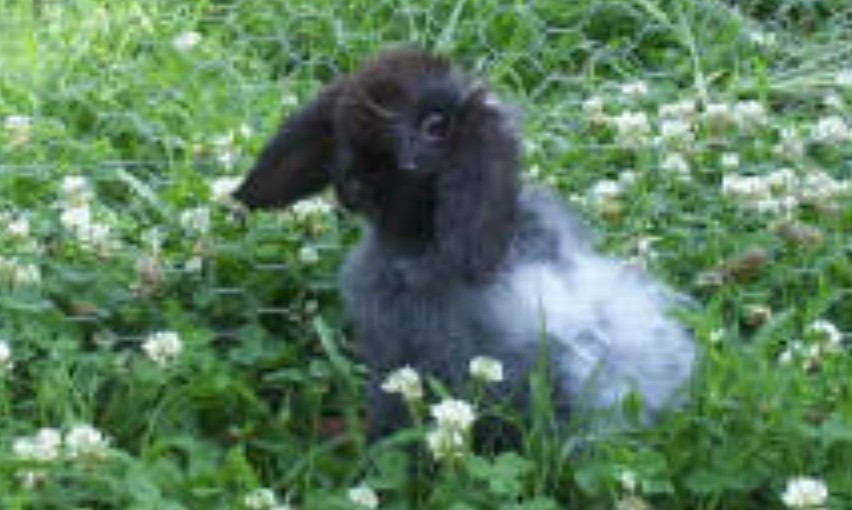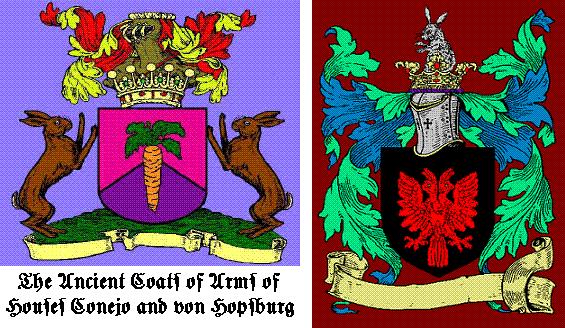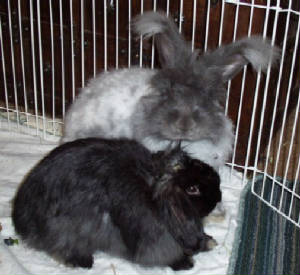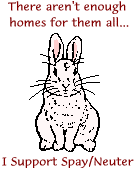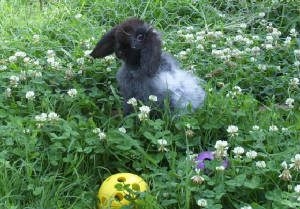|
Los Chronicles de Princesa Querida Conejo |
||||||||||||||||||||||||||||||||
| Home | The Royal Chronicles | Portraits of the Princess | William von Hopsburg | The Inhabitants of the Kingdom | El Palacio | The Royal Kitchen | The Environs of the Kingdom | Guestbook | Books | Links | ||||||||||||||||||||||||||||||||
|
In Memory of Our Beloved Princess
2004-2008
This site celebrates the joys of living with house rabbits. It will follow Querida and William's story
from the time they joined our house. In it you will learn about them, about us, and about our other feathered, scaled, and
furred family members.
Querida's name means "darling" in Spanish. The domestic rabbit (Oryctolagus cuniculus) originally
came from the Iberian peninsula. They are social animals and enjoy the company of their own kind or a human friend. In the
wild they live in groups in many-tunnelled burrows called "warrens." The origins of the domestic rabbit suggested
the Spanish theme to her name and her "kingdom."
American wild rabbits and hares are not related to the domestic rabbit. They do not live in
social groups. Wild rabbits have territories in which they will not tolerate other rabbits, except during breeding season.
These territories may encompass several square miles. Wild baby rabbits should be either left alone (their mother will come
back to them if the nest is undisturbed), or turned over to a wildlife rehabilitation specialist. They do not make good pets.
North American wild rabbits are not even in the same Genus (being primarily in Brachylagus
and Silvilagus) with domestic bunnies. That means that they are not even as closely related as horses and donkeys,
and most likely they would not be able to produce viable off-spring if they mated. Perhaps the most unusual example of
the wild rabbit is the highly endangered Romerolagus diazi, the Volcano Rabbit which lives in a diminishing
habitat on the slopes of a handful of Mexican volcanos.
All hares belong to the genus Lepus, and are found worldwide. The domestic rabbit and
its more distant relatives are all strict vegetarians. The one known exception to this is the North American Snowshoe Hare,
also called the "varying hare," (Lepus americanus). They have been observed scavenging meat from carcasses in
the wild. This only seems to happen during the winter when their normal food is in short supply. They are the only hare known
to live in forested areas.
"Man’s relationship with the European or ‘true’ rabbit was first recorded
by the Phoenicians over 1,000 years BC, when they termed the Iberian peninsula ‘i-shephan-im’ (literally, ‘the
land of the rabbit’), which the Romans converted to the Latin form, Hispania, and hence the modern word Spain. The wild
rabbit has long been hunted, but it is unclear exactly when domestication first took place. The Romans kept rabbits in walled
enclosures (‘leporaria’) and there is evidence that they brought them to Britain, but they did not survive at
this time. In Europe, and especially France, the domestication process was well under way by the fifth century, and in the
twelfth century the Normans brought them to Britain, where they became established and remain as both a domestic and wild
animal. Man also transported the rabbit throughout the world, often with devastating effect; absence of predators in Australia
and New Zealand has led them to become a pest. However, the rabbit has not become established in the wild in North America."
Anna Meredith MA VetMB CertLAS MRCVS,
Head of Exotic Animal Services, Royal School of Veterinary Studies, University of Edinburgh |
||||||||||||||||||||||||||||||||
|
|
||||||||||||||||||||||||||||
|
If you enjoy looking at this site, you might also like to visit our business web-site.
We make and sell art-to-wear clothing and accessories. Click the picture below to visit Tres Hermanas
Wool Works:
|

